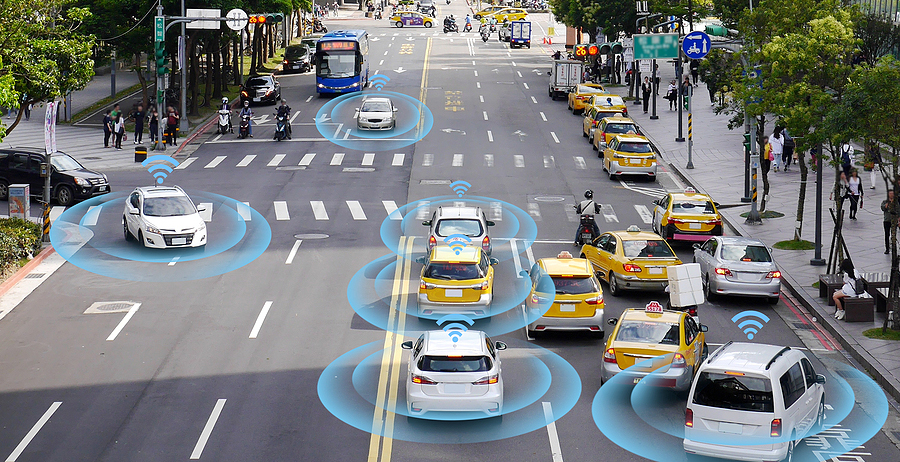As cars become smarter and more connected, the future of mobility is being shaped by technologies that go far beyond engines and wheels. One of the most transformative advancements is Vehicle-to-Everything (V2X) communication—a system that enables vehicles to communicate with each other, the road infrastructure, pedestrians, and the surrounding environment. V2X is at the heart of intelligent transportation systems and will play a vital role in making roads safer, more efficient, and eventually ready for autonomous driving.
What Does V2X Mean?
V2X stands for Vehicle-to-Everything. It’s a broad term that includes all communication systems where a vehicle can exchange information with:
- Other Vehicles (V2V)
- Road Infrastructure (V2I)
- Pedestrians (V2P)
- Networks or the Cloud (V2N/V2C)
- Grids or Energy Systems (V2G)
- Everything around it (V2X as a whole)
This communication occurs using wireless technologies such as Dedicated Short Range Communication (DSRC), Cellular V2X (C-V2X), and eventually 5G networks, enabling real-time data exchange for better decision-making and situational awareness.
How V2X Communication Works
V2X-equipped vehicles are fitted with sensors, processors, and wireless modules that continuously send and receive data. These messages include information like:
- Vehicle speed and direction
- Traffic light status
- Road conditions
- Nearby vehicle proximity
- Emergency vehicle alerts
- Pedestrian movement
The vehicle processes this data to either inform the driver, enhance driver-assist features, or make autonomous decisions.
Example: A car approaching a blind intersection can receive alerts from other vehicles or traffic signals and slow down—even before the driver sees the danger.
Types of V2X Communication
1. V2V (Vehicle-to-Vehicle)
Cars communicate directly with each other to share real-time position, speed, and direction. This helps in preventing collisions, coordinating lane changes, and enhancing traffic flow.
2. V2I (Vehicle-to-Infrastructure)
Vehicles interact with road infrastructure such as traffic signals, toll booths, road signs, and speed limit indicators. This enables smart traffic management and improved safety.
3. V2P (Vehicle-to-Pedestrian)
Vehicles can detect pedestrians using smartphone signals or wearable devices and alert both the driver and the pedestrian to avoid accidents.
4. V2N (Vehicle-to-Network)
Cars connect to the internet or cloud-based services to receive navigation updates, traffic forecasts, and software upgrades.
5. V2G (Vehicle-to-Grid)
Electric vehicles can communicate with power grids to manage battery charging/discharging, help balance grid load, and even supply electricity during peak demand.
Benefits of V2X Technology
✅ Enhanced Road Safety
- Early warnings for accidents, roadblocks, and emergency braking
- Reduced human error through real-time data exchange
- Protection for pedestrians and cyclists
✅ Improved Traffic Efficiency
- Real-time traffic signal coordination
- Optimized route planning to avoid congestion
- Fewer traffic jams and smoother highway merging
✅ Support for Autonomous Vehicles
- Enables Level 4 and Level 5 autonomy by providing additional situational data
- Improves vehicle awareness beyond line-of-sight sensors like cameras and radars
✅ Environmental Benefits
- Reduced idle times at signals
- Smoother traffic flow lowers fuel consumption and emissions
- Efficient EV charging through V2G integration
Challenges to V2X Implementation
Despite its potential, V2X adoption faces some hurdles:
- Lack of infrastructure: Many roads lack smart sensors or connected signals.
- Technology standardization: Competing formats like DSRC and C-V2X are not universally adopted.
- Cybersecurity risks: Vehicles exchanging data are vulnerable to hacking if not properly secured.
- High deployment costs: Upgrading vehicles and infrastructure requires major investments.
V2X in India: What’s the Status?
India is still in the early stages of implementing V2X. However, some progress is being made:
- 5G rollouts are expected to support V2X growth.
- Smart city initiatives are integrating connected traffic management systems.
- EV manufacturers are exploring V2G for energy management.
Pilot projects, especially in metro cities, are testing V2I and V2N technologies in controlled environments. In the long term, V2X will be crucial to managing India’s dense traffic and improving road safety.
Final Thoughts
Vehicle-to-Everything communication is not just a futuristic concept—it’s a foundational technology for the next generation of safe, efficient, and intelligent transportation. As more vehicles and cities get connected, V2X will redefine how we drive, commute, and interact with our environment.
Whether it’s helping avoid accidents, reducing congestion, or enabling autonomous mobility, V2X is set to be a game-changer in the automotive world.

